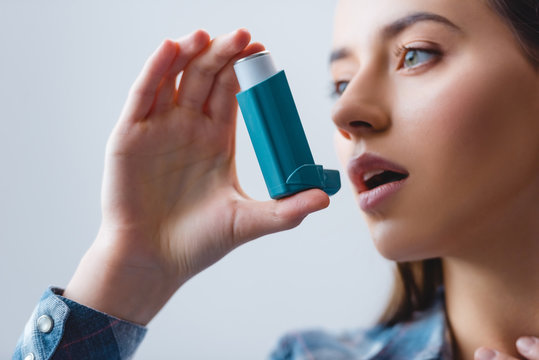Long-term control medicines (arranged alphabetically)
Corticosteroids
Blockage of delayed-segment allergic reactions. They prevent inflammation and mobile migration and reduce hyperreactivity in the airways. These are the most powerful and effective anti-inflammatory medicines available today. Inhaled corticosteroids can use to control asthma for a long time.
Immunomodulators
Omalizumab is a monoclonal anti-IgE antibody that prevents IgE binding to receptors with excessive affinity found on basophils and mast cells. Omalizumab is an adjunctive therapy for patients with severe chronic asthma or hypersensitive reactions over the age of 12. The clinicians who administer Omalizumab should prepare to deal with any possible anaphylaxis.
The Expert Panel has concluded regarding the use of LABAs in EPR-3 (p. 233)
LABA is one of the most popular adjunctive treatments that can combine with ICS in youths and adults over the age of 12.
Researchers are currently examining the use of formoterol as a treatment in acute conditions, and also in combinations with ICS in a dose that can adjust.
Safety concerns surround LABAs. LABAs consider monotherapy as a safe and effective alternative to ICS. The Expert Panel reviewed the FDA Pulmonary and Allergy Drugs Advisory Committee protection information.
LABAs are not recommended as monotherapy to control asthma for a long period of time. LABAs are still a good option for allergy sufferers older than 5 years who require a stronger treatment than low-dose ICS. The LABA will help them gain the same amount of weight. Iversun 12 and Iversun 6 tablets can be used to prevent asthma effects.
Inhaled corticosteroids
It is the most potent anti-inflammatory drug for allergies. It’s lasts a long period of time. It is less likely to cause side effects than corticosteroids.
When does it get use?
It prevents symptoms from appearing for a long period of time, controls reverse, and reduces irritation.
Reduce the use and abuse of short-acting medication
What is it like?
Anti-inflammatory. Reduces airway sensitization and allergic reaction. It inhibits adhesion proteins activation and cytokine generation.
Reverse beta2-receptor down-regulation. Inhibits microvascular leakage.
Possible side effects
Coughing, hoarseness (voice adjustments), oral thrush
When there is an excessive amount, systemic effects can occur. But studies have not confirm this, and the medical significance (e.g.) of these outcomes hasn’t establish. The medical significance of these outcomes (e.g., adrenal suppression, osteoporosis, boom suppression, skin thinning, and smooth bruising), hasn’t prove.
Children as young as pre-pubescents can treat with inhaled corticosteroids. Some studies showed an increase in suppression or delay. Some studies have shown an increase in delay or suppression.
This is the standard pdf but on steroids.
Further information about this remedy type:
Available in MDI (dry strength), dry strength (DPI), or nebulizer solutions
Spacer/valved-protecting chamber gadgets with MDIs and mouth washing after inhalation decrease the danger of oral side outcomes and systemic absorption.
When does it get use?
The anti-inflammatory effect of short-term “bursts” can be broad-ranging.
The long-term prevention and treatment of severe allergies or chronic allergies that are poorly controlled. Controls reduce irritation and reverse effects.
Possible facet outcomes
Short-term Use: Reversible. Abnormalities in sugar metabolism. Increased fluid retention. Weight advantage and mood change. High blood pressure. Peptic ulcer. Rare aseptic necrosis of the femur.
Long-term use of drugs can lead to systemic reactions, such as growth and adrenal axis inhibition, hypertension and diabetes Cushing syndrome, cataracts, and Cushing’s Syndrome.
Coexisting conditions such as varicella and herpes are important to take into consideration.
More information about the use of this medication
Use the lowest possible dose.
There were fewer serious side effects for asthmatics with severe chronic disease or poor management.
Leukotriene modifiers
It may be worthwhile to consider an alternative treatment for mild bronchial asthma sufferers older than 12 years of age. This is inhale corticosteroids at low doses.
What is the use of it?
Children with mild chronic asthma and low doses of corticosteroids are being offered this therapy as an alternative. It is unclear if leukotriene modifiers are effective at treating this condition.
According to research, leukotriene modules may be beneficial in the treatment of moderate chronic asthma when combined with corticosteroids. When is the best time of night to avoid asthma caused by exercise?
Improve pulmonary function and increase signs and symptoms.
Reduce the need for quick-relief medication
What is it like?
Leukotriene antagonists can block LTD4 receptors. montelukast and zafirlukast), and 5-lipoxygenase inhibitors (e.g. Zileuton blocks leukotriene production at the cell level.
Possible face Effects
Rarely, patients can diagnose with vasculitis or systemic eosinophilia. These symptoms are typical of Churg-Strauss syndrome. These behaviors are often associate with a decrease in oral corticosteroid medications and the start of a leukotriene modulificare medication. No causal relationship has establish. You can treat asthma with this Iverotaj 6-mg tablet.
Immunomodulators – Xolair (omalizumab):
Omalizumab is a monoclonal anti-Ige antibody. IgE binding high-affinity mast cells and basophils receptors. Omalizumab is an adjunctive therapy for allergic reactions in patients older than 12 years. Chronic severe allergies.
Omalizumab can enhance ICS.
- Use systemic steroids again after reducing exacerbations
- Reducing the number of daylight hours can reduce allergy symptoms and help you sleep at night.
- Reduce disruptions in daily sporting activities
Omalizumab is indicate for patients 12 years and older.
- Between 30 and 7 hundreds IIU/mL
- In vitro or in vivo, positive skin reactions to aeroallergens are evaluated.
- ICS is not effective in treating allergic bronchial symptoms
Ige levels between 30 and 7,100 IU/mL is require for all patients.

